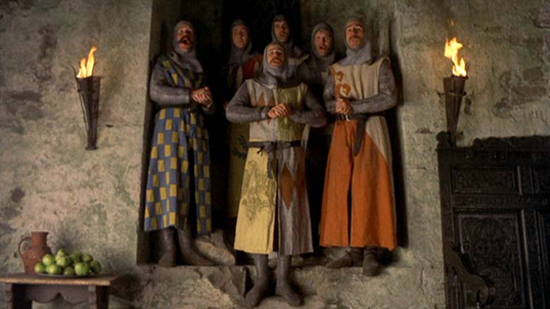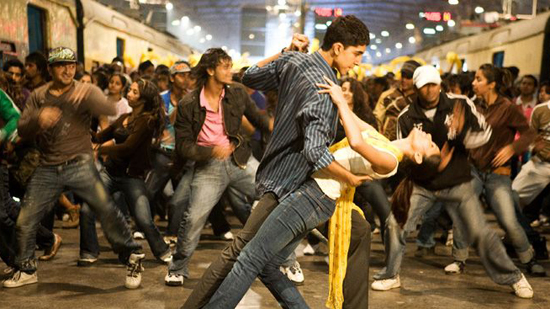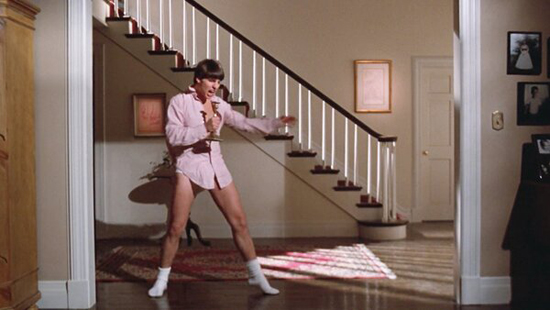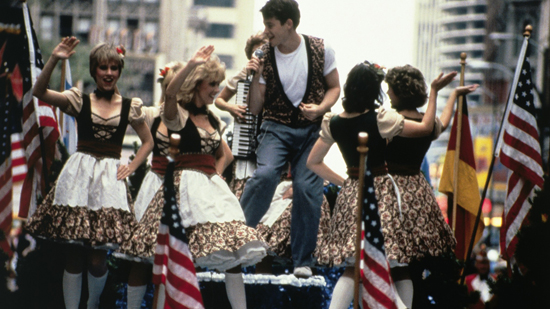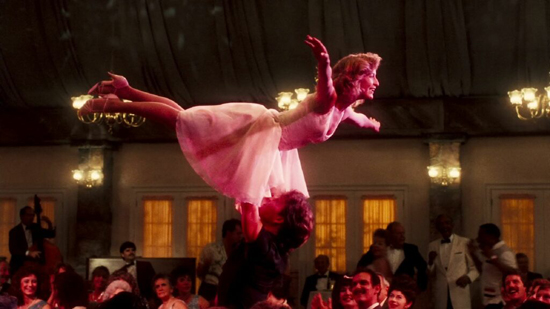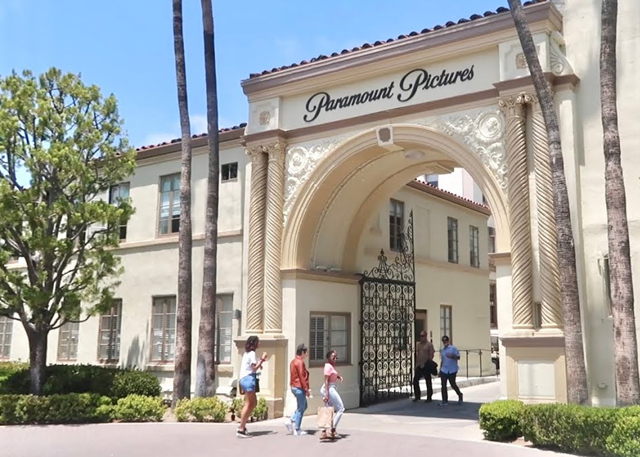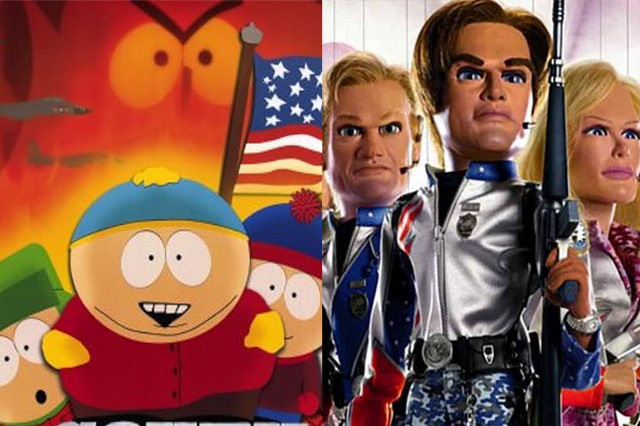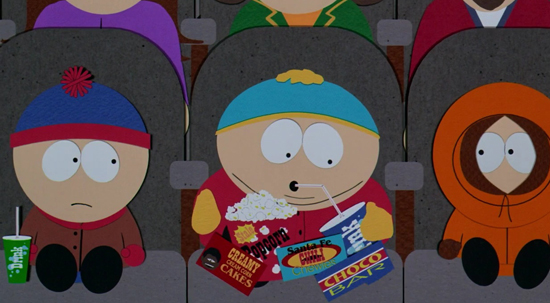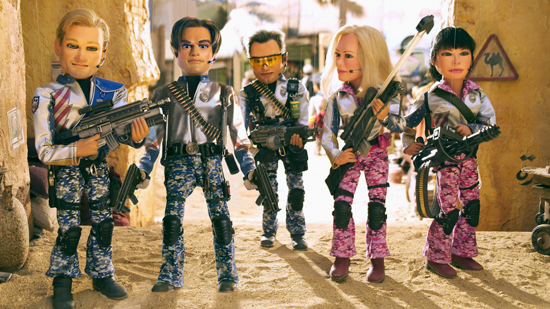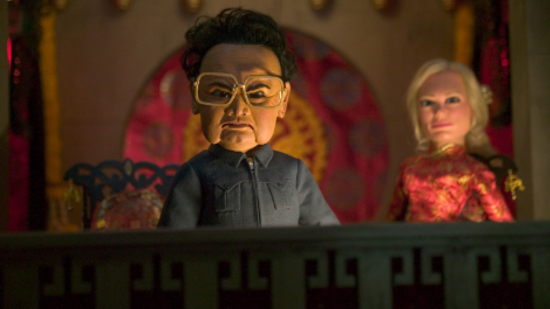
For a few years, there wasn’t just one way to define a Marvel movie. What we know now as the MCU (Marvel Cinematic Universe) has over the past decade been the flagship of Marvel media, but there were still remnants of Marvel’s past franchises that were still trying to compete alongside the MCU. Before Disney became the home base for the Comic book publisher, Marvel had spread it’s many characters across Hollywood, letting multiple different studios obtain the film rights. But with the debut of Marvel Studios in 2008, the idea was to create a connected cinematic universe which unfortunately was going to be complicated because it would require the cooperation of different competing studios to allow it to happen. When Disney bought Marvel, they now had a deep pocketed financier keen on executing this mighty vision, but the issue still persisted with the legacy rights held by the other studios. Surprisingly, Paramount gave up the rights to Iron Man, Captain America, and Thor without a fight, which helped to get the Avengers team-up rolling without issue. Sony, which holds the rights to Spider-Man, has been the only remaining hold out as they continue to roll out Spider-verse movies in order to still hold onto the lucrative character; many of which aren’t very good, which is probably why they made a good neighbor deal with Disney to allow shared profits on Spider-Man properties, so that Sony can still benefit from the success of the MCU. And then there was Fox, which for a time was the most defiant in holding onto their rights. They refused to allow their rights to revert to Disney, or make a neighborly deal like Sony did, so all of the characters they held onto would have had to sit out the connected storyline of the MCU, including the conclusion of their monumental Infinity Saga. That meant that iconic Marvel characters like the Fantastic Four and the X-Men missed out on what was considered to be the pinnacle of super hero movie-making.
Fans of those franchise were upset and that was reflected in the box office for the Fox Marvel films. Nobody was interested in the franchise anymore, because the MCU was what people were more interested. Fox Marvel needed the MCU more than the MCU need Fox. So, when it was announced that 20th Century Fox was about to be put on the market by it’s owner Rupert Murdoch in 2017, many comic book fans were hoping this would loosen up those rights to the Marvel characters, and allow for them to finally join the MCU. In a record breaking deal that closed in 2019, Disney did end up acquiring 20th Century Fox’s entire film library which included the film rights to all the Marvel characters owned by the now absorbed studio. But now that all the characters were under the same roof, the question remained how they were going to be worked into the ongoing narrative of the MCU. It wasn’t going to be easy, given the huge number of characters that exist under the X-Men banner alone. One of the more bold choices of this new direction for Marvel was to make the next saga of the MCU be centered around the concept of the Multiverse. Not only would exploring the multiverse help to expand the horizons of the stories that could be told, but it allowed Marvel to also canonize everything that had come before it. With the Spider-Man sequel, Spider-Man: No Way Home (2021), they legitimized all the previous versions of the character, by allowing current Spider-Man Tom Holland to fight alongside his predecessors Tobey Maguire and Andrew Garfield. Doctor Strange in the Multiverse of Madness (2022) also introduced a What If? selection of Avengers, that including the introductions of Charles Xavier (Patrick Stewart reprising his role) and Reed Richards (John Krasinski) into the MCU. But thus far, an actual movie centered on one of the stars of the Fox Marvel canon has yet to surface as part of the MCU. For those franchises to finally get their big debut into the MCU, Marvel and Disney needed to call upon their heaviest hitters, and that’s why we are getting a highly anticipated new feature that teams up two of the most popular super heroes of all time; Deadpool & Wolverine (2024).
Deadpool & Wolverine takes place not long after the events of Deadpool 2 (2018). Deadpool (Ryan Reynolds) has hung up the red suit after setting all issues right in his universe thanks to the time travel device that he got from Cable. However, not everything has worked out for him. His relationship with Vanessa (Morena Baccarin) is on the rocks and he has ended up in a dead end job that his buddy Peter (Rob Delaney) managed to get him on. Even still, he still finds love and support from his friends, including X-Men Negasonic Teenage Warhead (Brianna Hildebrand) and Colossus (Stefan Kapicic) and Deadpool’s foul mouth roommate Blind Al (Leslie Uggams). But, Deadpool’s time travel shenanigans have caught up to him, as he is captured by the Time Variance Authority (TVA), who are the police force of the multiverse. After being taken to the TVA’s headquarters, Deadpool meets Mr. Paradox (Matthew Macfadyen) who tells him that he has been granted the chance to join the Sacred Timeline, which is the MCU where all the Avengers live. It has been Deadpool’s dream to join Earth’s Mightiest Heroes, but he soon learns there’s a catch; he can never return to his own timeline, because it is doomed to fade away. Mr. Paradox tells him that the reason his universe is dying is because it has lost it’s Anchor Being, a figure who is key to the universe’s survival, and that Anchor Being just so happens to be Wolverine (Hugh Jackman). In order to save his universe, Deadpool travels the multiverse to find a replacement Wolverine, but the one he ends up bringing back is a drunken mess who was responsible for getting his entire X-Men family killed. In order to prevent them from altering their plans, the TVA sends Deadpool and the down and out Wolverine to a place called the Void, a realm that exists at the end of time. There, they find a renegade army of outcasts who are ruled over by a powerful mutant named Cassandra Nova (Emma Corrin), the exiled twin sister of Charles Xavier. In order to survive, Deadpool and Wolverine must work out their differences if they’ll ever be able to survive the wrath of Cassandra Nova and a colossal being made of anti-matter called Alioth that feasts on everything that ends up in the realm, wiping it from time and space.
The arrival of Deadpool & Wolverine comes at an interesting time for Marvel Studios. After experiencing unprecedented success over the last decade, the studio is experiencing something of a slump. The movies are not performing like they used to at the box office, and their critical reception has also seen a down turn. Now, I for one think that the online discourse is being wildly hyperbolic when it says that Marvel is dying. The Marvel output is certainly not at it’s peak, but their movies on the whole are still wholly watchable and in many cases still better than most movies. And a lot of their problems right now are really emblematic of the super hero genre as a whole and not exclusive to just them. No matter what the discourse says, I still look at each movie on it’s own and judge it by it’s own merits, and to my surprise, the movies that people claim are Marvel’s biggest failures in recent years are actually among my favorites (2021’s Eternals and 2023’s The Marvels). I will grant them the failure of Ant-Man and the Wasp: Quantumania (2023); that was bad. But, the Marvel like all the others have had to adjust their plans due to the shifting attitudes towards the genre as a whole. Due to the disappointing box office last year, as well as the delays cause by the WGA and SAG-AFTRA strikes, Marvel decided that they would only put out one movie this year in order for them to have time to re-organize. And that put Marvel’s entire 2024 hopes on the return of Deadpool. The first two Deadpool movies were monumental hits, and easily the most profitable from the Fox Marvel era, so you can see why Disney was eager to get Deadpool up and running as a franchise under their stewardship. A positive sign was that Marvel Studios was going to keep this franchise R-rated, which is the only way a Deadpool movie could be made. The even more promising news helping to spark interest for this movie was the long awaited team up between Deadpool and Wolverine, with Hugh Jackman returning to the character after initially retiring in the aftermath of the beloved film Logan (2017). One thing is clear, this is the right movie to help revive Marvel’s fortunes at the box office; a surefire team up between their heaviest hitters. But does it land as a cinematic experience. The answer is a bit more complicated.
One of the hallmarks of the Deadpool franchise is it’s irreverent sense of humor. Thankfully that has returned with Ryan Reynolds and company not missing a beat. The movie is raunchy, subversive, and a laugh riot. I found myself having quite a few great outbursts of laughter throughout this movie. Nobody is spared in the crossfire of all the jokes; Marvel, Disney, Fox, the comic book genre as a whole, they all get savaged by the zingers in this movie. But, it also in a way overwhelms the story that’s being told as well. The movie doesn’t quite the narrative pull that it should. It seems like most of the movie is just strung together to put Deadpool and Wolverine into different situations solely so that they can milk it for the comedy. Thankfully, the comedy does carry the film, but when you think back on the experience, the plot feels very flimsy. What is especially problematic is that character motivations throughout don’t make a whole lot of sense. It’s understandable with Deadpool since he is an agent of chaos that just unpredictably goes with the flow. But, we don’t get the deep character introspection with Wolverine that we should. There’s only vague reference to what makes him tick, and Deadpool even makes the meta joke about waiting for a third act flashback to explain Logan’s backstory. Thankfully, the movie doesn’t go for the easy cliché of actually cashing in that promise of a flashback, but we never really get closure on Wolverine as a character either. He’s just along for the ride with Deadpool too. For the most part, this movie is far more about the experience than the story and it does have some pretty incredible moments, mainly when the two leads share the screen. But, the first two Deadpool movies balanced the story and comedy with a bit more care; which is mainly because those movies were a bit more budget conscious and had to make sure everything was clearly defined on screen.
Deadpool & Wolverine also feels a tad bit more generic stylistically than the past Deadpool movies. I think this has to do with it being directed by Shawn Levy. Levy is a capable filmmaker, and is clearly someone that Ryan Reynolds likes to work with, given that he directed two of his most recent movies (2021’s Free Guy and 2022’s The Adam Project). But one area that I feel he lacks talent as a filmmaker is in the direction of the action scenes. The first film made great use of a limited budget to create memorable and creative action sequences. The second film leveled up even more by getting John Wick co-creator David Leitch to direct, and that film had some very stylish action set pieces that were stunning to look at. In Deadpool & Wolverine, the results are mixed. There are some neat action scenes, particularly in the beginning which has one of the greatest opening credits scenes I’ve seen in quite a while, and undoubtedly the best of this franchise yet. But, there’s another fight scene halfway through that makes disappointing use of shaky cam. The blandness of that shaky cam is extra insulting because there are unique character fighting styles that we really want to see in that moment, and it doesn’t give us a clear view of any of it. It was a scene like that where you really want to see the Leitch style steady shots used more. But where credit is due, Shawn Levy does deliver when it comes to the comedy. There are some excellent prat fall moments in this film, and when the movie calls for some gratuitous violence delivered in a funny way, Levy does hit the mark. But, given that this story was intended to have more of an action centric edge to it, it might have been better to get a director with more action movie experience than the guy behind the Night at the Museum franchise. He’s good with comedy to be sure, but lacking in that thing that could have made the movie feel just that extra bit exciting.
The thing that undoubtedly is the best element of the movie is the performances. It should be noted that the title Deadpool & Wolverine is a very good indicator of this film as a whole. It is very much a two hander of film, with Wolverine getting just as much of the spotlight as Deadpool. Ryan Reynolds of course is in his element as Deadpool. This has been his baby now for nearly a decade, and you can tell that he brings his A-game every single time. He doesn’t disappoint here at all, making Deadpool just as lovably raunchy and irresistibly funny throughout. I especially love the fact that he is playing the character as just as big of a fanboy of the MCU as the audience who will be watching this movie. Of course, getting Hugh Jackman back as Wolverine is another miraculous accomplishment for this film, and Hugh does not disappoint. His performance here is especially strong, and amongst the best he has ever done for the character, managing to hit some surprisingly strong pathos in an otherwise silly movie. And of course, the most talked about part of his return is that we finally get to see him in the comic book accurate blue and yellow costume, which Deadpool hilariously derides as making him look like a mascot for the LA Rams. What is interesting is that the movie isn’t so much of a debut for Deadpool and Wolverine in the MCU as it is a swan song for the Fox Marvel universe. Don’t go in expecting cameos from any Avengers, as the cast here is made up of familiar faces from Deadpool’s past. It is good to see past cast members make a return, especially Leslie Uggams as Blind Al. But, it does seem like Marvel is saving their encounters between Deadpool and the MCU for later. There are still some incredible cameos in this movie; ones that I will spare spoiling here as they are a big surprise, including that made my jaw drop when I saw this character appear on screen. The villains in this movie, Mr. Paradox and Cassandra Nova are fine, though not among the all time greats in the Marvel canon. Emma Corrin in particular gets some nice scene chewing moments, and the visualization of her power is effectively disturbing. Matthew Macfadyen also brings a nice bit of stuffy British humor to the role of Paradox. The cast in general, with the two charismatic leads and some genuinely pleasing surprises will definitely leave audiences happy about this movie.
Regardless of the flaws that this movie has, it’s still going to be a fun experience at the movies. It helps when you see this movie with an audience full of comic book nerds who will riotously cheer at all the big comic book and movie references thrown out in the film. As an experience, this is absolutely a fun time. I just wish that it held up better as a story. In many ways, Marvel has become their own worst enemy because of how well all the story lines fell into place for their biggest hit, Avengers: Endgame (2019). Now we seem to expect that for every movie that they make, which can never be the case because they aren’t movies that function on the same level. While I do feel that Marvel is doing much better story wise than what the internet discourse is claiming to be a failure on all levels, there is no denying that they have had some struggles keeping the momentum going beyond Endgame, something that Deadpool even jokes about in the movie. Does Deadpool & Wolverine fix all of those problems. No, and in fact the symptoms are actually a bit more obvious in this movie than they are in other recent Marvel films. But, it’s still a great fun experience when you go in just wanting to have a good laugh and see two Marvel icons team up for the first time. Hugh Jackman and Ryan Reynolds have incredible chemistry on screen and that definitely helps to propel the film. The jokes are also more hit than miss, so it definitely delivers on the comedy. I definitely think that Marvel will get back on it’s footing after a tough couple of years. I feel their biggest mistake post-Endgame was moving too fast, putting out too many movies and shows per year. With Deadpool & Wolverine being their lone standard bearer this year, it will give Marvel the time to take a deep breath that it needs before starting the next act, which includes debuts of the Fantastic Four and more X-Men. And, more than anything else, this movie shows that things work out better when a movie feels more like a labor of love than a mandate to fill a spot on a timeline. The best thing about Deadpool & Wolverine is that it helps to renew our excitement for what Marvel has next for us in it’s future. And given that the movie delivers Marvel’s first ever R-rated experience, that could be an open door for just about anything.
Rating: 8/10

